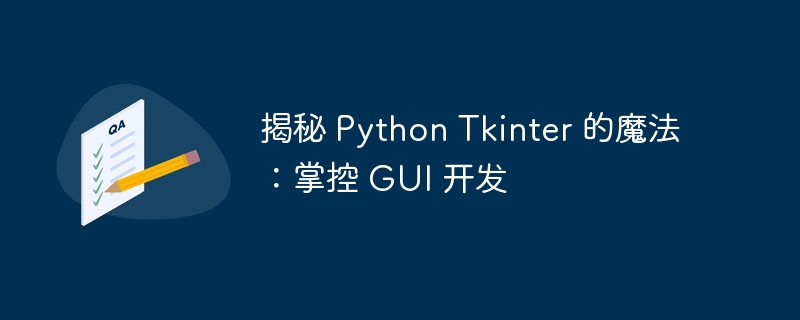

Components and Layout
Tkinter provides a series of widgets such as buttons, labels, and text boxes that can be combined to form more complex GUIs. These widgets can be arranged in various ways, using grid or wrapper layout managers. Grid layout managers arrange widgets in a grid, while wrapper layout managers arrange widgets in horizontal or vertical rows.
Event handling
Tkinter adopts an event-driven model. When the user interacts with the GUI, such as clicking a button or entering text, Tkinter fires an event. Developers can use callback functions to handle these events and respond accordingly.
Steps to create a GUI
The following are the basic steps to create a GUI using Tkinter:
import tkinter statement to import the library. root through the Tk() function. Button, Label and Entry small parts. m<strong class="keylink">ai</strong>nloop() function to start the main event loop, which will continue to listen for events and update the GUI accordingly. Advanced Features
In addition to basic features, Tkinter also provides more advanced features, such as:
Advantage
Using Tkinter for GUI development has the following advantages:
limit
Although Tkinter is a powerful tool, it also has some limitations:
Overall, Tkinter is a full-featured and easy-to-use GUI library in python, ideal for rapid prototyping and simple GUI application development. For applications that require higher performance, a more modern look, or advanced functionality, developers may want to consider other GUI frameworks.
The above is the detailed content of Uncovering the Magic of Python Tkinter: Mastering GUI Development. For more information, please follow other related articles on the PHP Chinese website!
 Commonly used permutation and combination formulas
Commonly used permutation and combination formulas
 How to use aspose
How to use aspose
 Introduction to SEO diagnostic methods
Introduction to SEO diagnostic methods
 Basic usage of insert statement
Basic usage of insert statement
 Solution to the problem that vscode cannot run after downloading python
Solution to the problem that vscode cannot run after downloading python
 Comparative analysis of vscode and visual studio
Comparative analysis of vscode and visual studio
 How to create a soft link
How to create a soft link
 What to do if you can't delete files on your computer
What to do if you can't delete files on your computer




